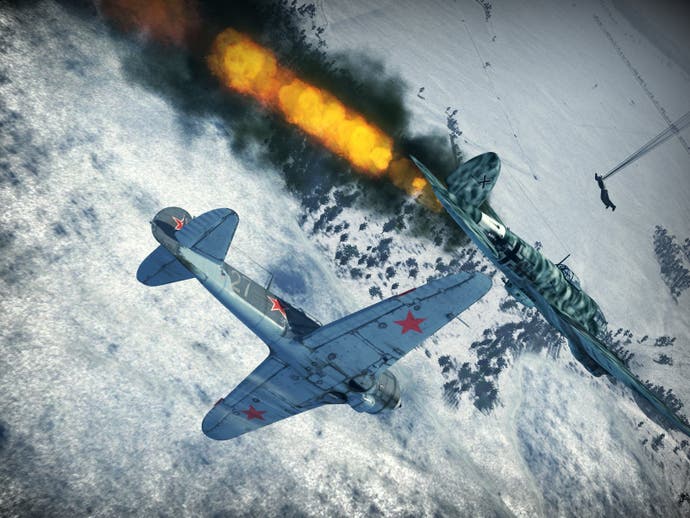Wings of Prey
Heir worthy.
Views below the cockpit rim are no less attractive than those above it. Intricate interiors that looked great in IL-2 look amazing in Wings of Prey thanks to improved textures and fantastic self-shadowing. Switching to the chase or HUD view (sadly there's no flyby or ground cams) feels faintly sacrilegious, though you'll want to jump outside occasionally just to admire the sun glinting off the lovely weather-beaten skins.
The fact that aircraft insides are included at all is remarkable enough. That so many of the dials and switches have in-game relevance is truly extraordinary. Going by its campaign approach you'd think Wings of Prey was aimed squarely at casual fliers, yet if this was indeed the case why would the developer let us fiddle with performance-boosting esoterica like prop pitch, cowl and fuel mix settings?
Why too would Gaijin bother licensing reality-rooted flight models that can, at the higher difficulty levels, make keeping your bird in the air a challenge in itself? Bizarrely, some of the 40+ flyable planes are actually more of handful in this sim than they are in Oleg's classic. The P-51 Mustang, the star of the Bulge episodes, is especially lairy, any over-eager stick-waggling resulting in a dizzying descent.
If you're new to the genre or unwilling to spend time test-flying, don't expect to max out realism and stay aloft for long. If, on the other hand, you're a seasoned simmer, you're going to love the edginess of it all. Which isn't to say the flight experience couldn't be improved. If stalls and spins were presaged with a smidgeon of airframe shudder or control looseness, they might feel a little more authentic.

The incredible intensity and vividness of Wings of Prey's dogfights is built on the authority of its flight models, the verisimilitude of it graphics and the quality of its bandit AI (excellent, apart from the odd sleepy moment) but there are other smaller factors at work too.
In high-G manoeuvres, vision tunnels, sound distorts, and breathing becomes laboured. The effort of dragging a foe into your sights can feel positively Herculean. Weapon effects and near misses also have a nice physical kick to them. Cannon shells colliding with your crate, shake it alarmingly. Even the lead spewing from your own gun muzzles generates troublesome vibrations. If you're stopped on the ground with brakes off, pressing the fire button will actually roll your bird slowly backwards.
IL-2's famously thorough damage models have been imported lock, stock and barrel-roll. Hits to wings, tails and fuselages leave gaping holes and will over time turn your obedient thoroughbred into a stubborn three-legged mule. Rounds striking canopies and fuel tanks can kill instantly.

Then of course there's self-inflicted wounds. Power plants will seize if pushed too hard, gear and flaps will jam if lowered at too a high a speed. Thank God planes can be pancaked on any open ground, and instant respawning is, in single-player at least, always just a key-press away.
The four communal modes - deathmatch, team deathmatch, strike and capture the airfield - are a lively way to wile away an hour or two, but like most dogfight-based MP can be harsh environments for the inexperienced and the inept. No crewable bombers or AA guns mean the less capable have nowhere to hide. Historically-inspired co-op missions shine in IL-2 MP and probably would in this too, given half a chance.
The recent Wings of Luftwaffe pack shows Gaijin has plans for Wings of Prey. If those plans include a fresh campaign approach or tools for building new scenarios, then the future for this gorgeous, surprisingly gritty game, is magnesium-bright. If they simply intend to fatten already plump hangar and mission folders then, sadly, Wings of Prey is likely to fall out of favour faster than a plummeting Stuka.